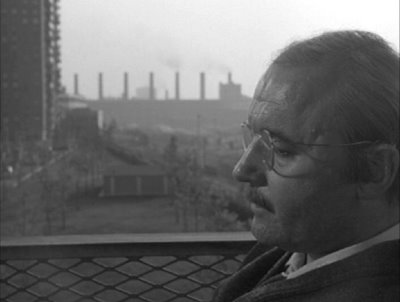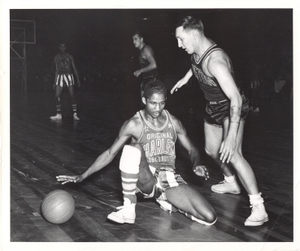(photo from K. Silam Mohammad’s lostintheframe.blogspot.com)

“The Pawnbroker” stars Rod Steiger as a Holocaust survivor who becomes a pawnbroker in Spanish Harlem in the early-60’s. This places the action 20 years out from WWII, roughly the same time that has passed since the first Desert Storm — not a long time. It must have been even more powerful to see this harrowing film in the 1960’s than it is today.
Steiger has a sheer presence that makes minor quibbles, like his hard-to-place accent, inconsequential. The weight of experience is so heavy upon the main character, Mr. Nazerman, that he can only respond to people in the most perfunctory manner. All social niceties have left him. Thus when the pimp who is laundering money through Nazerman’s pawnshop mockingly calls him “Professor”, Nazerman simply hangs up the phone. Or when a junkie, trying to sell a gimcrack radio, berates him as a “filthy blood-sucking kike”, he barely glances up as he replies “Still at the same address?”. Seeing this disregard for social convention is a guilty pleasure, like watching Michael Imperioli of The Soproanos pull out a gun in order to get faster service in a donut shop. It brings you over to Nazerman’s side, a dangerous place to be, because when the emotions do come out, they will be titanic.
Lumet uses grids and latticework as a symbol of confinement throughout the film: the metal protective metal grid inside the pawnshop, often casting shadows on the characters, the fancy cross-hatched room divider in the pimp Rodriguez’ pad, the railing on the patio of the social worker’s apartment, the barbed wire in the flashbacks to the concentration camp. And who can blame Nazerman for staying within the lines?
Ultimately though, Nazerman discovers that his business is being financed through prostitution, he flashes back to images of his wife (girlfriend?) in Nazi “Joy Division” sexual slavery, and he has a breakdown. The final scene is of Steiger plunging his hand through the sharp ticket-holder spine, then wandering the streets of Spanish Harlem, staring at his stigmata, shortly after his assistant has been killed in a botched robbery attempt.
The power of Steiger’s performance isn’t in the shaking and grimacing though, it’s in his non-reactivity. Being non-reactive is a high-status trait, and we find it intriguing that Nazerman, essentially a schlemiel who is at the behest of petty crooks, can carry himself with such authority. Perhaps we fellow schlemiels can model ourselves after him in some way.
Yet there is an underlying tension of knowing that, in order to achieve this equanimity, he must essentially kill the parts of himself that are human, and this cannot last for long. How tempting it would be for an actor of lesser stature to give up on this theme, to instead portray the character as angry or simmering, and to try to force meaning into the dialog that Steiger wisely treats as throwaway. Steiger rejects poignancy and is a master of self-control. Thus when he breaks down it is all the more terrible.
Minor notes and other gulity pleasures: Interiors are shot with that old klieg-light style that makes every character look like an escaped prisoner pinned against a prison drainpipe. The apartment furnishings inside Brock Peter’s apartment are authentic Saarinen pedestal items (Saarinen claimed he wanted to provide a “solution for clearing up the slums of legs in US homes”) and Eames chairs. Peter’s manservant looks like a photographic negative of himself, instead of a black man in white clothing it’s a white man with silver hair in black clothing, an early Andersen Cooper type.



